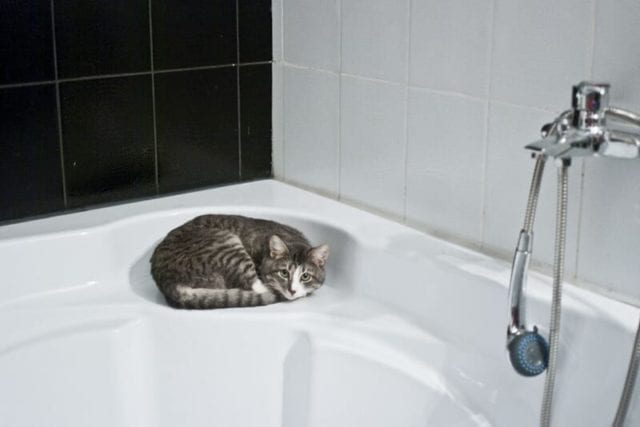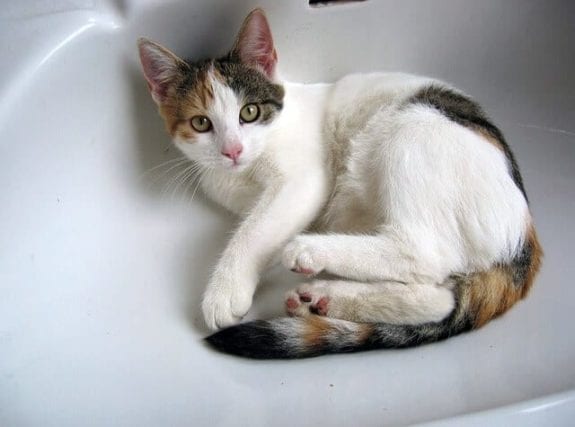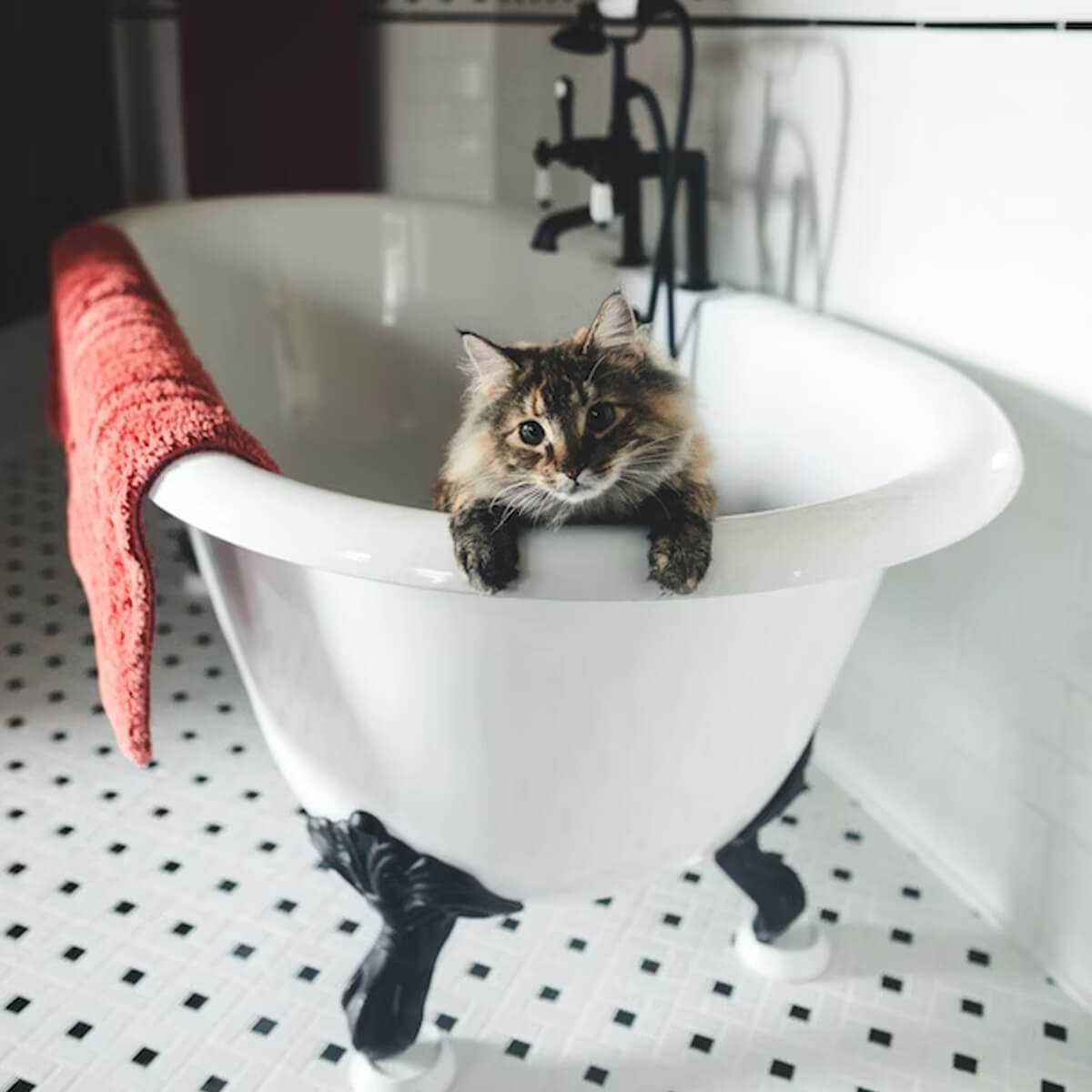There are a few explanations as to why your cat suddenly abandoned Its litter box and starts defecating in the shower, bathtub, or sink. It’s a frustrating, stinky, and unpleasant turn of events.
Fortunately, if your kitty is healthy, you can probably stop this unwanted behavior by changing things in its bathroom and making the litter box more attractive.
Feline potty behavior varies between cats, and litter box problems can stem from underlying health conditions, stress, environmental factors, or a combination. It helps if you take the time to review your cat’s emotional and physical health so that you can determine what the problem is and what is the best way to fix it.
Why Do Cats poop in the Bathtub or Sink?
Cats are generally very neat and clean animals. When your cat defecates in a prohibited area after faithfully using Its litter box, It’s trying to tell you something. First, check the litter box to make sure it is not full, does not smell bad, or has been tipped over.
Also, make sure nothing has blocked your cat’s access to the litter box. Anything in the box that your cat finds wrong may prompt It to do business elsewhere.

Health Issues
Next, consider a health problem. Cats struggling to eliminate in front of the owner, squatting to urinate, or pooping in their presence, maybe crying out for help. Cystitis sometimes encourages cats to urinate in odd places.
Painful elimination due to constipation, for example, can prompt cats to avoid the litter box if they associate it with discomfort. If you suspect the change is due to a health concern, make an appointment with your vet right away.
The vet will likely perform a physical exam and may also use blood tests to determine if there is an infection or digestive problem that may be causing this.
Emotional stress
Cats sense emotional changes and can feel a change in the home. If there is a new baby in the home or a family member has died or moved, this can cause stress for the cat, which, in turn, can affect its emotional health.
Even if your cat was not attached to the family member who left, It will feel the loss and react to Its emotional state, as well as any changes in Its routine. Consider other changes as well, such as a new cat in the home, a change in routine, or just plain boredom.
Behavior Problems
Urinating in the sink or tub can be a way to mark territory, especially in a multi-cat household. Even some neutered cats use bare feces as a form of dominance. Sink porcelain feels nice and cool against the footpads, compared to sandy sand.
Also, the bathtub or sink cleaner can influence the preference. Cats are often attracted to the smell of bleach and like to remove it. A clean, shiny surface that hints at the presence of bleach can be very attractive.

Have you ever allowed your cat to enter the bathroom while you are using it? Cats often follow their owners to the bathroom. It is not out of the range of possibilities for your cat to try to emulate you.
Also, consider that some felines prefer to have separate facilities for solids and liquids. Although there may be more than enough space in the litter box, the cat may prefer to have a cool box for the potty deposits.
Have you ever allowed your cat to enter the bathroom while you are using it? Cats often follow their owners to the bathroom. It is not out of the range of possibilities for your cat to try to emulate you. Also, consider that some felines prefer to have separate facilities for solids and liquids.
Although there may be more than enough space in the litter box, the cat may prefer to have a cool box for the potty deposits.
How to Prevent Your Cat from Pooping in the Bathtub or Sink
There are some simple steps you can take to help modify your cat’s behavior. Try the technique that seems to work best for your cat, your lifestyle, and your situation. Feel free to make a few changes at a time.
Sandbox changes
Making a few simple changes to the litter box can help the situation. Add a second litter box, preferably in a different room so your cat has the option of using one litter box for # 1 and the other for # 2.
Consider placing the second box inside the empty tub. If the cat gets used to using it, then move it next to the bathtub for a few days and then move it to the desired place. Empty the litter box up to 2 to 3 times a day and clean it once a week.
Try to use a larger litter box to encourage its use. Base the size of the litter box on the size of the cat and not where it fits. The box should be about 1 1/2 times the size of your cat. It is important that the cat feels comfortable with its litter box, get one that will really work for your cat.
What to Avoid
Make sure the litter box is not near where the cat eats and drinks. Avoid high-tech litter boxes or covers. Lights and automatic actions can scare cats, and a closed box can be claustrophobic.
Scared cats can avoid the litter box. Do not let your cat enter the bathroom when you are using it. Although cat-copying behavior is rare, it is not helpful to be seen using the bathroom.
Changes in the Environment
Fill the sink and tub with a small amount of water. This water can deter your cat from entering the bathtub or sink and prevent the action from occurring. Try a new brand of detergent. Some cats don’t like texture, smell, or other factors of certain types.
If you think your cat may be bored, provide ample toys that provide entertainment and mental stimulation.
Next steps
If your cat continues this behavior even after the changes have been made, a pet behavior specialist who specializes in felines might be helpful. This person can help re-teach your cat’s appropriate behavior and can find some solutions that are specific to your cat and your life situation.
If you suspect that your pet is sick, call your vet immediately. For health-related questions, always consult your veterinarian, as they have examined your pet, know its health history, and can make the best recommendations for your pet.


